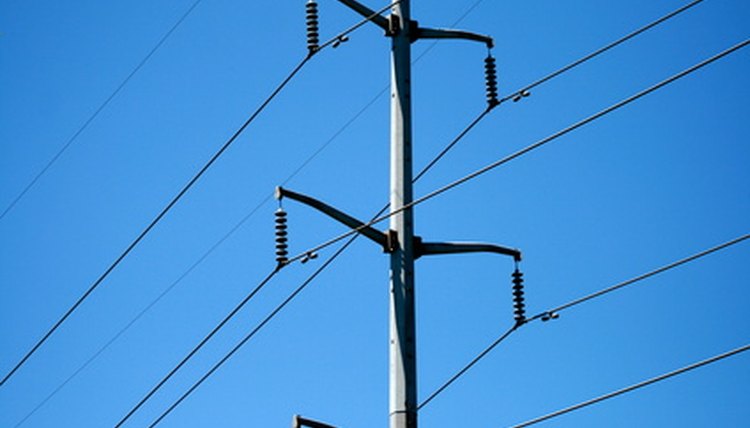What Is a Safe Working Distance From Power Lines?

Workers look to the Occupational Safety and Health Administration (OSHA) to understand how close they should be to power lines. As a general rule, 10 feet is the minimum safe working distance from power lines. To follow exact regulations, you should know the voltage of the power lines that you will be working near.
OSHA Regulations
OSHA regulations dictate that all personnel and tools be a certain distance from overhead power lines whenever work needs to be done near them.
Voltage Requirements
The distance you must be from power lines depends upon the voltage of those lines. The higher the voltage, or electric potential of the lines, the farther you should be from them when working.
Ten Feet
OSHA requires that you work at least 10 feet away from power lines 50,000 volts or less. For higher voltages, you are required to stay farther away.
Eleven to Eighteen Feet
If the power line is 51,000 to 138,000 volts, you should work at least 11 feet away. If it is more than 230,000 volts, work at least 13 feet away. Finally, if it is 500,000 or more volts, work at least 18 feet away.
Additional Requirements
In addition to distance requirements, OSHA law also requires that when work is done near power lines, the lines should be grounded or de-energized. This means that the lines must be on the ground or turned off to prevent accident or injury.
References
Writer Bio
Sarah Lambert has worked as a journalist since 2007. She has worked at the "Auburn Plainsman," a student newspaper in Alabama. Her work also has appeared in the "Chicago Tribune" and "USA Today." She has a bachelor's degree from Auburn University and is currently working as a reporter at the "Battle Creek Enquirer."
